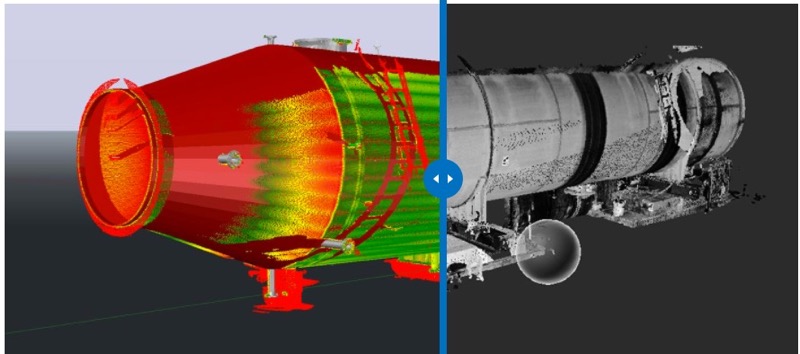SKUR, a popular software tool that performs construction deviation analysis by comparing as-built site data against the design model, has announced two new features.
No more GCPs?
The first feature, Assisted Alignment, automates the process of aligning the two models. To use it, you identify similar surfaces within each model and then algorithms do the rest to align design and as-built data “without a loss of fidelity.” The main benefit of this process is that it virtually “overcomes the need for ground control points (GCPs) when aligning design and point-cloud data.” Furthermore, the success rate seems high–SKUR says the algorithms work in most cases.
Why does this matter? Design and as-built models are often difficult to align, because they can have different coordinate systems and orientations. In the past, a project would solve this problem by hiring a surveyor to place GCPs, which can be used to align the two models tightly. Unfortunately, this required extra expense, and a waiting period during which construction progressed. Users can now align the models themselves to get on with their deviation analyses and react to potential problems faster.
Better accountability
The second new feature, which SKUR is calling its “integrated Approval Workflow,” is designed to help project assign accountability for the deviations discovered within the software.
It displays a prioritized list of deviations with a number of possible actions. You can approve an issue, or assign a stakeholder or contractor to address an issue, and even audit the work to indicate that it has been completed to satisfaction. This workflow, SKUR says, can help ensure that relevant deviations are acted on, and don’t “fall through the cracks.”
Both new features are available for all tiers of SKUR customers.






